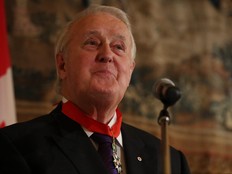Kingston hospital first in Canada to adopt AI tool for heart disease diagnosis
$100K philanthropic donation funds technology to reduce invasive cardiac procedures

Article content
Kingston is now home to Canada’s first hospital using AI to spot heart disease.
As of Aug. 6, Kingston Health Sciences Centre (KHSC) has become the first hospital in Canada to implement an artificial intelligence (AI) tool that diagnoses coronary artery disease using CT scans, following a $100,000 donation from local philanthropist Stephen Sorensen.
Recommended Videos
The technology, a software program called Heartflow, uses CT scan images to create a 3D model of a patient’s coronary arteries, applying AI analysis to measure blood flow to the heart muscle and determine whether blockages are limiting oxygen supply. The technology offers an alternative to cardiac catheterization, which involves threading a wire into the arteries to measure blockages.
“It takes that anatomical data [from the CT scan] and synthesizes it into functional data, and that has a huge impact,” KHSC Head of Diagnostic Radiology Dr. Omar Islam said in an interview with the Whig. “We can see not just the visual narrowing of the arteries, but we can then determine the reduced blood flow through those vessels, and that reduced blood flow is directly related to the risk of patients having a heart attack in the future.”
Sorensen’s $100,000 contribution to Heartflow was made through the University Hospitals Kingston Foundation (UHKF), which raises funds for KHSC and Providence Care to make equipment purchases and upgrades not covered by provincial operating budgets.
“[Sorensen has] clearly gotten a lot of interest in innovation and technology,” CEO of UKHF Tom Zsolnay said in an interview with the Whig. “I think he enjoys speaking to the physicians, and he also recognizes that health care is important, not just funding for the whole community, particularly those that are close to us all, and so he felt that this would be a good way to help improve care in the region.”
Zsolnay added that this is not a new relationship, explaining in the last five years Sorensen has helped fund an MRI machine in the breast imaging centre, a separate portable MRI machine, and the refurbishing of an Interventional Radiology suite.
As for the technology, Islam added that the technology works by taking images from a CT scan, sending those digitally to the Heartflow headquarters in California, and within a couple of hours, the program analyzes the images and provides data points that estimate blood flow.
“It’s sort of like if you look at Google Maps or Apple Maps, you can you get a nice map of where you need to go, from point A to point B. If you apply Heartflow to that, Heartflow is like adding in where the traffic jams are on those roads,” Islam said. “It really gives you added information that you would otherwise not be able to see on a static map.”
The main benefit, he added, is that patients don’t have to undergo the traditional invasive procedure which involves sending wire needles through their bodies to take images and determine blood flow. He explained they no longer have to send all patients to the catheterization laboratory when running this kind of test, which could save up the 30 per cent of patients from an unnecessary visit.
While the technology is used in the United Kingdom and in the United States, this is its first application in Canada. Islam hopes that the program is able to be expanded to other centres across the country and urged provincial funding to achieve this goal.
“If the honourable Mr. Doug Ford is listening, this is a great application tool. It saves lives, it’s better for patients, and it reduces cost to our health care system, it’s a no brainer,” Islam said.
In place of funding, the need for philanthropy was also covered by Zsolnay, adding the government does not typically cover major equipment purchases like Heartflow.
“When it comes to government funding for buying equipment, fixing buildings, or building new ones, they typically do not fund that. What they will fund is if there’s a brand new hospital or a brand new wing put on hospital—sort of like a really major capital project. Typically, they fund 90 per cent of the clinical spaces, and the other 10 per cent the hospital has to find somewhere else.”
Zsolnay added that since not everything is covered, community donations are essential for ensuring hospitals can meet patient needs.
“There’s a myth that our health care in Canada is all free, and that’s true to a degree, and certainly the operations of the hospital is run and paid for through our taxes, but it’s never been the case that equipment purchases are paid through operating grants,” he said. “The hospital has to find other ways and means of funding, and part of that comes from things like how many Tim Hortons donuts they can sell, but then there’s a big chunk that also comes through philanthropy—people that are willing to step up from the community to make sure that we all have access to care.”











Postmedia is committed to maintaining a lively but civil forum for discussion. Please keep comments relevant and respectful. Comments may take up to an hour to appear on the site. You will receive an email if there is a reply to your comment, an update to a thread you follow or if a user you follow comments. Visit our Community Guidelines for more information.